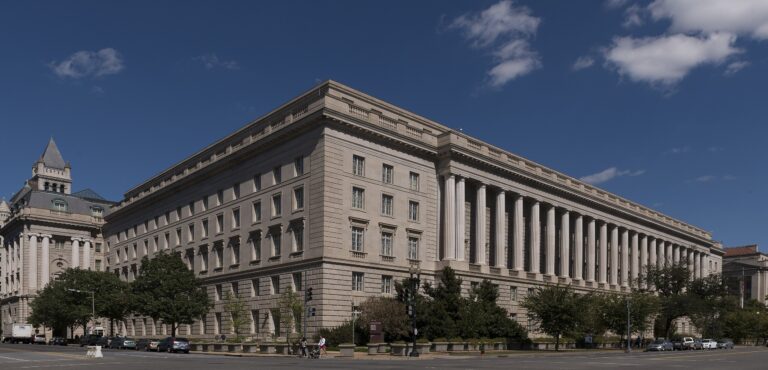
Justifiable Limitations Upon Freedom of Religion and Belief in Australia’s Draft Human Rights Bill: Lessons from the New Zealand Bill of Rights Act 1990
P. T. Babie
Image of Dunedin, New Zealand by Arvid Olson from Pixabay
While Section 116 of the Australian Constitution appears textually to provide broad protection for freedom of religion or belief (FoRB), its interpretation by the High Court of Australia severely restricts its potential. The problem stems from the judicial conflation of two questions: whether FoRB has been violated and, if so, whether the infringement is nonetheless justifiable pursuant to a legitimate governmental objective. If the High Court had separated those two inquiries, the result might have been different. But it no longer seems possible for such an interpretive update to occur—so well-established is the judicial narrowing of Section 116 that few, if any, litigants even bother to argue it in cases otherwise involving FoRB.
A recent development, however, may finally provide Australia not only the comprehensive national protection for human rights which it currently lacks, but also a means for balancing infringements of individual FoRB with the wider community’s interest in peace, order, and good government. On 15 March 2023, the Attorney-General of Australia referred to the Parliamentary Joint Committee on Human Rights a number of human rights matters for inquiry and report by 31 March 2024. One of those matters was whether the Australian Parliament should enact a federal Human Rights Act. Having received an extension, the Joint Committee delivered its report on 30 May 2024, Appendix 5 of which contains an example Human Rights Bill (‘HRB’). The HRB contains a protection for FoRB, in Section 22:
(1) Every person has the right to freedom of thought, conscience and religion, which includes:
…
(b) the freedom, either individually or in community with others and in public or private, to manifest the religion or belief in worship, observance, practice and teaching.
The HRB also contains a “limitations” clause, in Section 12, for use in determining the justifiability of violations of rights such as those protected by Section 22:
(1) A human right may be subject under law only to such limits that are reasonable and can be demonstrably justified in a free and democratic society based on human dignity, equality and freedom.
Sub-section 2 contains a list of considerations to be taken into account in determining whether a limitation is reasonable and justified, including the nature of the right, whether the limitation is aimed at achieving a legitimate objective, the relationship between the limitation and its objective, including whether the limitation will be effective to achieve the objective, whether the limitation is proportionate to the objective sought to be achieved.
Neither Section 22 nor Section 12 provide any guidance as to their interaction. And so, a court, faced with adjudicating a claimed Section 22 violation, and, if it an infringement is found, whether it is reasonable and justifiable under Section 12, must answer a threshold question: ought its analysis of the right to be one which applies “scope balancing”—reading limits into the definition of the right itself, thus obviating the need to proceed to a second stage of inquiry concerning the justifiability of any infringement—or “justification balancing”—using a two-stage approach in which the first stage defines the right broadly and considers whether it has been infringed, before proceeding to a separate, second stage of inquiry in which the justifiability of that violation is considered?
Fortunately for Australia, if it chooses to adopt the HRB, guidance can be found close to home, in New Zealand’s experience with its Bill of Rights Act 1990 (NZBORA).
Like the HRB, the NZBORA contains a protection for FoRB, in Section 15:
Every person has the right to manifest that person’s religion or belief in worship, observance, practice, or teaching, either individually or in community with others, and either in public or in private.
And a limitations clause, in Section 5:
The rights and freedoms contained in this Bill of Rights may be subject only to such reasonable limits prescribed by law as can be demonstrably justified in a free and democratic society.
But more importantly, New Zealand’s courts, including its highest court, the Supreme Court of New Zealand, have had 35 years of experience on which to draw in working out the interaction of rights protections, such as those found in Section 15, and the Section 5 justifiable limitations clause. The New Zealand courts seem to have adopted a justification balancing methodology, fixing a ‘broad articulation of right accompanied by authority to subject the right to reasonable limitation.’
This short essay considers the NZBORA experience, and argues that, if the HRB is adopted, Australian Courts should follow their antipodean neighbours and apply a justification balancing analysis to Section 22 and 12 in assessing claimed FoRB violations. Utilising this two-stage methodology would prevent conflating/confusing the two relevant analyses into one, as has been the case with Section 116 of the Australian Constitution, giving a wider scope of protection to FoRB, as well as allowing the courts fully to explore the reasonableness of claimed governmental justifications for violations.
The Two-Stage New Zealand Methodology
The New Zealand experience, as Petra and Andrew Butler demonstrate in their treatise on NZBORA (parenthetical numbers that follow are to the reatise), is that no right is absolute, and, because “acceptance of this principle is crucial to the ‘two-stage’ methodology in interpreting the rights and freedoms,” (6.5.3) it provides an analytical methodology for use in assessing rights violations. (6.5, 6.1.2, 6.4.1)
The first stage of analysis, concerning the scope and violation of the right, gains little attention in the case law because the New Zealand “courts tend to give a broad ambit to…freedom of religion and belief.” As such, claimed violations are upheld by the courts, leading to the second stage, during which a court considers the reasonableness of justifications proffered by government.
The Butlers give five reasons for treating Section 5 as a provision that requires justification balancing, each of which applies to Australia. First, the location of Section 5 in Part I of the NZBORA (its general provisions) suggests that the question of scope and meaning of a right in Part II, rights and freedoms, should be a separate inquiry. The HRB contains the same structure. Second, a two-stage process accords with the burden of proof contemplated by s 5, with the onus resting on the plaintiff to demonstrate interference with a right and that onus shifting to the state to justify that interference in stage-two. Again, Section 12 of the HRB contains the same onus-shifting language as found in Section 5. Third, the two-stage approach ensures a clearer transparent analysis; this would also be the case with respect to the interaction of Sections 22 and 12 of the HRB. Fourth, justification balancing ensures against the redundancy of Section 5—this would apply with equal force to the role for Section 12 in the HRB. And, finally, comparative constitutional experience favours this approach, citing Canada’s experience with the Charter of Rights and Freedoms. And, in the case of the HRB, both Canada and New Zealand would provide that comparative constitutional experience.
And New Zealand’s courts allude to these reasons in the extant case law. While the leading decision, Hansen v R, does not uniformly address it, the judgments of three members of the New Zealand Supreme Court reveal that “the approach seems to be coalescing around a justification balancing method, but with varying degrees of explicitness.” (6.6.3-6.6.10) Thus, while it continues to evolve, we can discern in that case a test for what are considered “reasonable limits” pursuant to Section 5. Justice Tipping provided the most detailed analysis of that test, with each justice of the Supreme Court adopting a similar approach. Justice Tipping enunciated the Section 5 analysis this way:
- does the limiting measure serve a purpose sufficiently important to justify curtailment of the right or freedom?
- (i) is the limiting measure rationally connected with its purpose?
- (ii) does the limiting measure impair the right or freedom no more than is reasonably necessary for sufficient achievement of its purpose?
- (iii) is the limit in due proportion to the importance of the objective?
Subsequent decisions confirm that the Hansen test has become the controlling methodology for applying Section 5. Thus, applied to Section 15, Hansen provides the widest possible ambit to FoRB. (14.6-14.7) And, having found a violation, the focus of the inquiry becomes one of the reasonableness of limitations imposed upon FoRB.
The decisions dealing with FoRB can be classified into three groups. First, those involving the criminal law, in which the courts have found that the right claimed pursuant to Section 15 may not override the criminal law, or criminal trial procedure involving the giving of testimony, or the requirement to undertake an induction program as part of a public detention sentence, or charges of tax fraud, or the creation of noise, or harm to the environment.
Second, in relation to education, the New Zealand Court of Appeal held that “the right of parents to manifest their religion in practices extends to bringing up and educating children in that religion until such time as their children are able to exercise their own freedom of religion.”Still, “a parent has no absolute right to bring up children as he or she thinks fit and…where there is a conflict between parents in their beliefs the ordinary standard of society must be adopted.” In such cases, “the limit is the physical and mental well-being of the child.” (14.15.11)
And, finally, cases involving health care, which indicate that religious belief will not override medical opinion in cases where parents seek to deny care for their children, or where medical opinion opposes extending the life of a child where that life will be only one of suffering and pain.
Conclusion
A single-stage scope balancing approach carries with it the very real risk of conflating/confusing one inquiry – into the ambit of FoRB and its violation – with a second inquiry – whether the limitation imposed upon the right is reasonable and justifiable. We have already seen the stifling of potential such an approach has had for Section 116 of the Constitution. To avoid that outcome if the HRB is adopted, a two-stage, justification balancing methodology should be used in interpreting the interaction of Sections 12 and 22.
The New Zealand experience, applied to the HRB, would clearly separate and demarcate the two goals of the judicial analysis of FoRB. It would allow a court, as part of its duty to determine whether a particular law is an undue infringement of FoRB, to weigh the competing interests through a consideration of the importance of the right as against the importance of the governmental objective, the rational connection between the limitation imposed to achieve that objective, and the proportionality between the two. Moreover, as part of that process, it would provide both parties to such litigation the opportunity to make submissions that will allow the court to weigh those competing interests. The Australian courts, then, faced with the threshold question concerning the interaction of Sections 12 and 22, ought to apply a NZBORA-informed two-stage justification balancing methodology. ♦

P. T. Babie is Bonython Chair in Law and Professor of Law, Associate Dean of Law (International), and Director of the Research Unit for the Study of Society, Ethics, and Law, at the Adelaide Law School, The University of Adelaide, Australia. He is an expert in property theory, property law, the history of real property law, and law and theology.
Recommended Citation
Babie, P. T. “Justifiable Limitations Upon Freedom of Religion and Belief in Australia’s Draft Human Rights Bill: Lessons from the New Zealand Bill of Rights Act 1990.” Canopy Forum, April 15, 2025. https://canopyforum.org/2025/04/15/justifiable-limitations-upon-freedom-of-religion-and-belief-in-australias-draft-human-rights-bill-lessons-from-the-new-zealand-bill-of-rights-act-1990/.
Recent Posts










